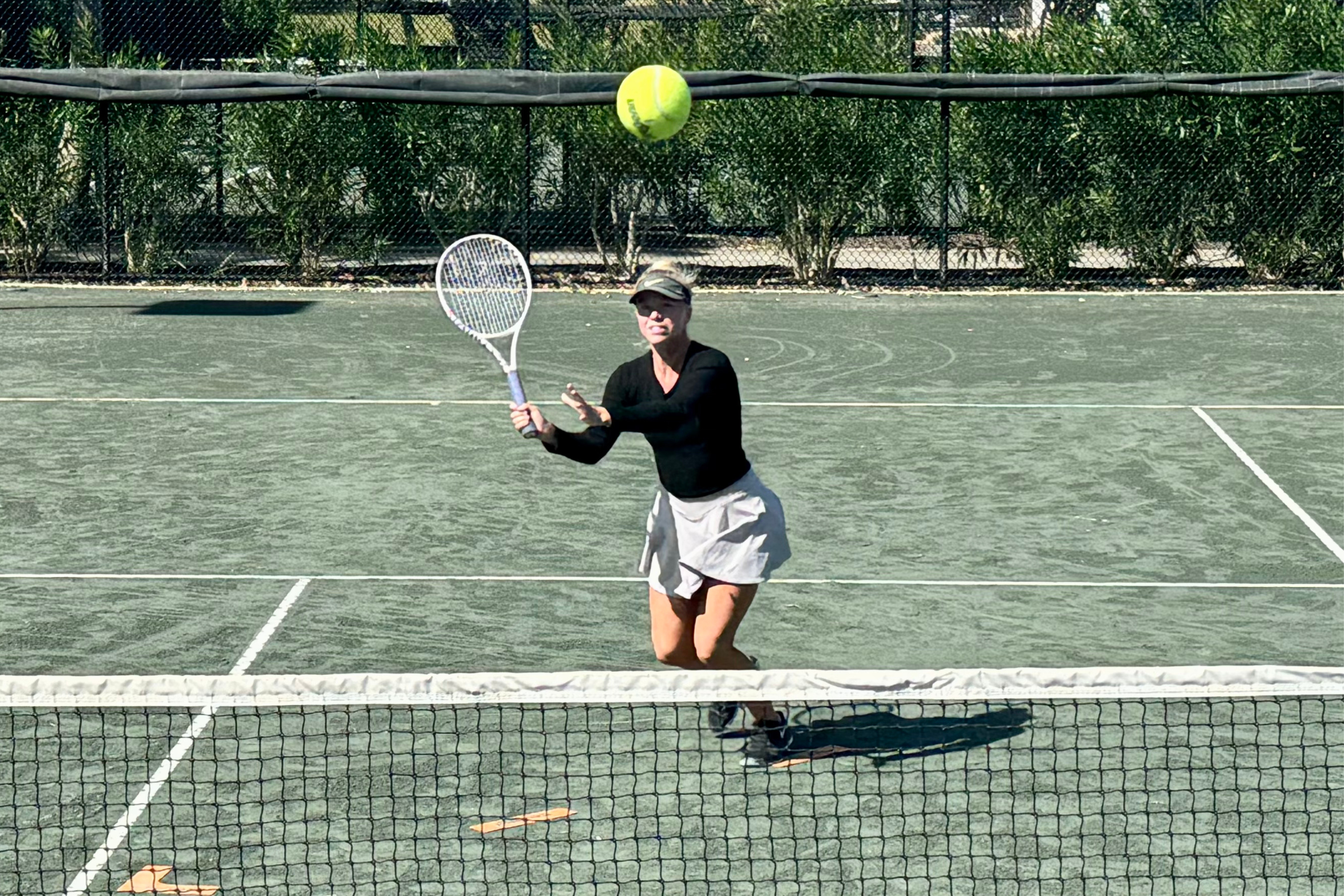The Club At Hammock Beach Blog

The Best Guide to Poaching in Doubles Tennis
- March 27 2025
- Kate Batzel
"The key to winning doubles is simple: own the net." – John McEnroe
Some players control the net like chess masters—moving with precision, reading their opponents, and striking with confidence. Others hesitate. They react instead of anticipating, leaving opportunity a worthy opponent will seize. How to make sure it doesn't happen to you? Poaching.
Poaching in tennis isn’t just a flashy move it can change everything in a game. The best tennis players, whether they be weekend warriors or tennis pros at the French Open 2025, know that winning at the net means moving forward and, on a diagonal, never sideways, and never flat-footed.
If you’ve ever been caught in no-man’s-land after a failed poach, you know the feeling. But there is good news: poaching is a skill, not a talent. Master the right movement, time it well, and suddenly, you’re the player dictating the point—forcing errors, finishing rallies, and giving your doubles partner a reason to buy the post-match drinks.
What is Poaching in Tennis?
Poaching is the ultimate power move in doubles tennis. It’s when the net player cuts off a shot meant for their partner, taking control of the point and finishing it decisively. The best tennis pros don’t wait for a perfect setup—they create it.
Players at the top of their game use poaching to apply pressure, disrupt their opponents’ rhythm, and dictate the pace of play. But not all poaches are created equal. Terrible timing can leave the court exposed, making life easy for your opponents.
You need a clear plan, sharp instincts, and seamless communication with your partner. And it all starts with the golden rule.
The #1 Rule: Move Forward and on a Diagonal
Many club players make the mistake of moving laterally when they poach. This leads to weak volleys and poor positioning. Instead, the best poachers move forward and diagonally, allowing them to:
- Take the ball at a higher point of contact.
- Cut off angles to make passing shots nearly impossible.
- Position themselves for a strong follow-up volley.
- The biggest mistake amateur players make is moving straight across instead of forward.
That’s how you end up lunging, stretching, and popping up weak volleys which is a dream scenario for your competition. The pro poachers move forward and diagonally, allowing them to take the ball higher having more control, and more angles, cut off passing shots reducing your opponent’s options and set up a strong follow-up volley so you win the point, not just touch the ball.
Common Mistakes When Poaching in Tennis
Moving straight across instead of forward.
Reacting too late and getting caught off balance.
Forcing a poach when it’s not the right moment.
Solution: Start a half step further back in the service box. This small fix gives you room to read the play and move forward with control rather than lunging sideways.
Tennis Tips for Poaching Like a Pro
1. Read the Play Before You Move
Remember it's about anticipation, not reaction. Great tennis players spot poaching opportunities before the ball even leaves their opponent’s racket.
Look for the signs:
A weak return or floating ball from your opponent.- Your opponent looking down or struggling with footwork.
-
-
- A predictable crosscourt shot from a player under pressure.
-
If you can read these cues, you’ll be in the right spot before your opponent even realizes what’s happening.
2. Communicate with Your Partner
Great doubles tennis teams signal their poaches either with hand signs, eye contact, or verbal cues.
Pro Tip: Before the serve, agree on who will poach and when. Then you know you and your partner are on the same page, preventing confusion at the net.
3. Perfecting the Aggressive Volley
A lazy poach does more harm than good. If you cut off the ball but leave an easy volley, you’re inviting your opponent back into the point. Instead, make your volley decisive:
Keep your racket up and ready at all times
Step into the ball instead of reaching for it
Aim for deep, controlled volleys that force weak returns.
Mastering these techniques ensures that once you poach in tennis, you finish the point instead of handing your opponents an easy shot.
Upcoming French Open 2025: How the Pros Poach Under Pressure
At the French Open 2025, expect to see doubles teams using poaching to their advantage. Top tennis players like Marcelo Arevalo, Mate Pavic, and Rajeev Ram have perfected this strategy, making them near impossible to pass at the net.
By watching the pros, you can pick up valuable lessons on:
How to time poaches against aggressive baseliners
When to fake a poach to throw off opponents
The best court positioning to maximize reach and coverage
Be prepared when you hit the court and take your doubles game to the next level
Poaching in tennis isn’t just a shot in the dark. When done right, it shifts control of the point, puts opponents on the defensive, and makes you a force at the net. It can be one of the best ways to take control of a match, and it starts with smart movement, sharp anticipation, and aggressive execution.
Ready to elevate your game? The best way to improve is through expert coaching. At The Club at Hammock Beach, players receive elite training, world-class facilities, and personalized tennis lessons to master advanced strategies like poaching.
Want to listen to our podcast on this topic? Click Here!


